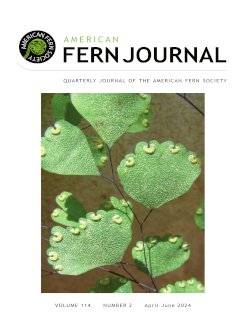Cystopteris fragilis is widely distributed globally, particularly in the northern hemisphere and in temperate montane regions of the southern hemisphere. Nonetheless, there is limited published evidence of its physiological ecology. This is a report of the physiological ecology of C. fragilis growing in the crevices of a stone wall in Palisades, N. Y. during the summer of 2022 when the northeastern U. S. A. experienced an extended period of excessive heat and drought. Highest laboratory measurements of maximum rehydrated photosynthesis rate (Ac) occurred in June (1.83 µmol CO2 m–2 s–1) prior to the onset of the more severe heat and drought in July and August when the photosynthesis rates declined (1.47 and 1.58, respectively). The lowest rate was found in September (1.41) prior to onset of leaf senescence and dehiscence. Dark respiration (Rd) followed a comparable trend with the highest rate in June (0.82 µmol CO2 m–2 s–1), with lower rates in July, August, and September (0.40, 0.43, and 0.55, respectively). Additional evidence is presented on leaf fluorescence including chlorophyll concentration index (C.C.I.) as well as PS II data on quantum yield efficiency (Fv/Fm) and electron transfer per reaction center (ET0/RC) during each of the five months. This study provides the first evidence that C. fragilis can be a desiccation-tolerant, ‘resurrection fern’ capable of dormancy enduring extreme dehydration and resumption of normal physiological activity within 24 to 48 hours after heavy precipitation events.
How to translate text using browser tools
17 June 2024
An Ecophysiological Study of Cystopteris fragilis with Evidence of Desiccation Tolerance
O. Roger Anderson
ACCESS THE FULL ARTICLE

American Fern Journal
Vol. 114 • No. 2
April–June 2024
Vol. 114 • No. 2
April–June 2024
Climate stress
leaf fluorescence analysis
leaf quantum yield efficiency
photosynthetic carbon dioxide assimilation
plant physiological ecology




